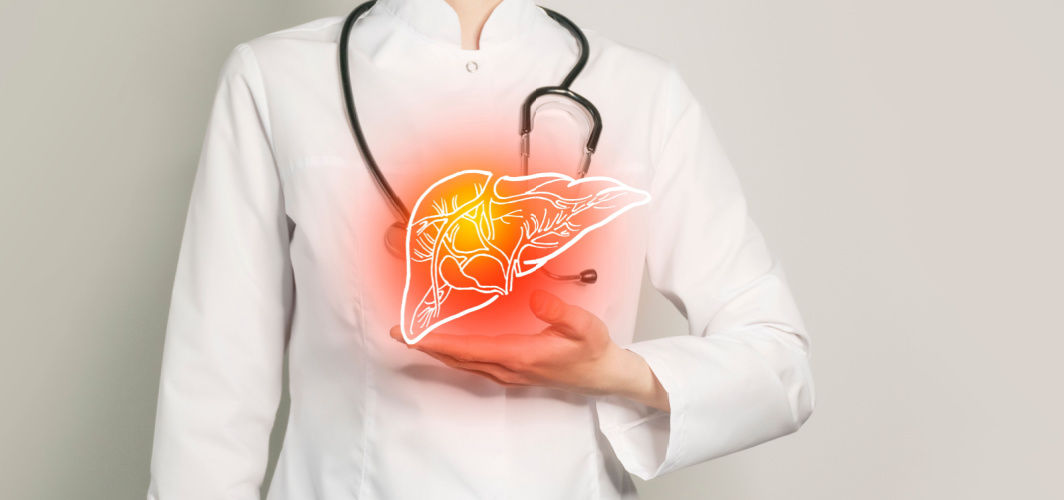General Health
What Does A Diagnostic Ultrasound Do?
6 min read
By Apollo 24|7, Published on - 08 August 2023, Updated on - 12 September 2023
Share this article
0
0 like

Diagnostic ultrasound, also known as sonography and diagnostic medical sonography, employs high-frequency sound waves to create pictures of internal organs and soft tissues, including blood vessels. These images, referred to as sonograms, offer vital insights for diagnosing and treating diverse diseases and conditions. Ultrasound procedures are mainly conducted externally, but some types may involve inserting a small device within the body. Here’s all you need to learn about diagnostic ultrasound, its uses and its techniques.
Why is Diagnostic Ultrasound Needed?
Healthcare professionals utilise diagnostic ultrasounds to examine internal body structures for potential abnormalities or malfunctions. These scans aid in understanding the underlying causes of various symptoms, such as masses, unidentified pain, or anomalies indicated by abnormal blood test results.
However, ultrasound isn't suitable for imaging bones or air-containing tissues like the lungs. Its effectiveness lies in assessing conditions involving soft tissues like organs, blood vessels, and glands.
How is an Ultrasound Done?
Here’s how an ultrasound is performed:
1. Preparation
The patient may be asked to change into a hospital gown and lie down on an examination table. A clear gel is applied to the area of the body being examined, which helps the ultrasound transducer (a small handheld device) make better contact and transmit sound waves.
2. Transducer Movement
The sonographer places the transducer on the gel-covered skin and moves it gently over the area of interest. The transducer emits high-frequency sound waves that bounce off internal structures, such as organs and tissues.
3. Image Formation
As the sound waves travel through the body, they create echoes that are sensed by the transducer. These echoes are sent to a computer, which processes them to generate real-time images on a monitor. The images help visualize the internal structures and provide insights into their shape, size, and consistency.
Types of Diagnostic Ultrasound
The doctors recommend a diagnostic ultrasound based on your symptoms and complaint. The types of diagnostic ultrasound available include:
1. Abdominal Ultrasound
It generates images of the organs and blood vessels within your abdomen. Healthcare providers may recommend this type of ultrasound for various reasons, including monitoring the development of a foetus during pregnancy.
It's also used to examine components of your digestive system, such as the liver, gallbladder, pancreas, abdominal blood vessels like the inferior vena cava and aorta, spleen, bladder and kidneys. This ultrasound aids in identifying the source of unexplained abdominal pain and diagnosing conditions like:
- Kidney stones
- Abdominal aortic aneurysm
- Kidney cancer
- Gallstones
- Bladder stones
- Gallbladder inflammation
- Kidney disease
- Liver disease
- Pancreatitis
- Abdominal tumours or cysts
- Enlarged spleen
- Certain types of cancer (such as pancreatic cancer)
- Fatty liver disease
2. Kidney (Renal) Ultrasound
It evaluates the shape, size, and placement of your kidneys, along with related structures like the bladder and ureters. It's also used to examine blood flow to your kidneys. Kidney ultrasound can identify:
- Renal tumours
- Abscesses, cysts, blockages, infections, and fluid accumulation in or around kidneys
- Kidney and ureteral stones (calculi)
3. Breast Ultrasound
It generates internal images of your breasts, aiding in a detailed assessment of areas that might be hard to visualise on a mammogram (breast X-ray). This non-invasive test is valuable for detecting breast cysts and lumps.
A healthcare provider might suggest a breast ultrasound to differentiate between fluid-filled breast cysts (usually non-cancerous) and solid masses (which may need further evaluation). It's also used to investigate abnormal focal points in the breast identified on a mammogram.
4. Pelvic Ultrasound
It examines organs in the pelvic region, spanning between the abdomen and legs, including the bladder, ovaries, fallopian tubes, prostate, uterus, rectum, and vagina.
Doctors may suggest this ultrasound if you experience pain during sex and/or urination, difficulty getting pregnant, abdominal or pelvic pain, unusual periods, urinary incontinence, swelling in the belly, or bleeding after menopause. It aids in diagnosing various conditions, such as:
- Bladder cancer
- Kidney stones that have travelled or are travelling down to the bladder
- Hernias
- Endometriosis
- Ectopic pregnancy
- Gynecologic tumours
- Ovarian torsion
- Ovarian cysts
- Pelvic inflammatory disease
- Polycystic ovary syndrome (PCOS)
- Pelvic organ prolapse
- Uterine fibroids
- Prostate cancer
- Cysts or infections in seminal vesicles
- Testicular cancer
- Penile or scrotal injury
- Scrotal or testicular infection
5. Transvaginal Ultrasound
It enables doctors to review the pelvic cavity and its organs, such as the cervix, fallopian tubes, uterus, and ovaries. It reveals abnormal growth or structures inside the pelvic cavity. Doctors may recommend this ultrasound if a person is experiencing symptoms like abnormal bleeding or pelvic pain. A transvaginal ultrasound assists providers in identifying:
- Tumours
- Cysts
- Fibroids
- Indicators of a pelvic infection
- Polyps
- Signs of cancer
- Potential causes of fertility problems
- Indicators of miscarriage or ectopic pregnancy
- Position of an intrauterine device (IUD)
6. Thyroid Ultrasound
This ultrasound can help evaluate the thyroid gland, which is a butterfly-shaped gland in the neck. A thyroid ultrasound is conducted to identify growth, enlarged size of the gland, or abnormal lymph nodes nearby. It aids in diagnosing:
- Enlargement of your thyroid gland
- Cysts (nodules filled with fluid)
- Thyroid nodules
- Thyroid cancer
- Inflammation of the thyroid
7. Transrectal Ultrasound
In this ultrasound, a doctor would introduce an ultrasound probe (transducer) into the rectum to assess the rectum and nearby tissues like the prostate gland or pelvic organs. Transrectal ultrasound can be used to gather tissue samples for the diagnosis of:
- Inflamed prostate
- Enlarged prostate
- Prostate cancer
- Infertility in women
- Cysts on the reproductive organs
- Rectal cancer
- Problems affecting the female reproductive system like cancer
- Anal cancer
After your examination, a radiologist, a specialist in interpreting imaging studies, reviews the images and sends a report to your doctor, who will discuss the findings with you. Following an ultrasound, you can usually resume your regular activities without delay.
To book your test scans, Click Here
FAQs
Q. How does an ultrasound work?
Ultrasound involves transmitting high-frequency sound waves into the body's tissues. These waves bounce off internal structures and return to the probe, which converts them into electrical signals. These signals are converted into real-time images by the computer and displayed on a nearby screen.
Q. Who performs an ultrasound?
Ultrasounds are conducted by a doctor or a healthcare professional known as a sonographer or an ultrasound technician. These specialists are trained to operate ultrasound machines accurately and safely.
Q. How to prepare for an ultrasound?
Certain ultrasounds need no preparation. However, for pelvic ultrasounds, you might need to drink water to fill your bladder. Abdominal ultrasounds might require dietary adjustments or fasting. Your healthcare provider will provide instructions if any special preparation is needed.
Q. Is an ultrasound painful?
External ultrasounds (over the skin) are typically painless. Ultrasounds that involve the insertion of transducers within the body cavities, like the rectum or vagina, might cause discomfort but shouldn't be painful.
Q. Are ultrasounds safe?
Yes, current research generally indicates the safety of ultrasound technology without harmful effects. Unlike CT scans and X-rays, ultrasound doesn't use radiation. However, it's crucial that all ultrasounds are conducted by trained professionals.
General Health
Consult Top Radiologists
View AllLeave Comment
Recommended for you
.jpg?tr=q-80)
General Health
ECG Test – Normal Range, Purpose, Procedure, And Results Interpretation
Learn about the ECG test: its purpose in diagnosing heart conditions, the simple procedure, understanding normal ranges, and interpreting your results.

General Health
LYM Blood Test – Normal Range, Purpose, Procedure, And Results Interpretation

General Health
Fibroscan Liver: Liver Elastography Procedure, Testing Preparation & Expectations
A fibroscan is an ultrasound-based technique that is used to measure liver scarring or fibrosis. It is a relatively simple process that should not take more than thirty minutes. It is a good non-surgical alternative to traditional biopsy since it provides quick and accurate results.
Subscribe
Sign up for our free Health Library Daily Newsletter
Get doctor-approved health tips, news, and more.
Visual Stories

The Best Exercises for Controlling Blood Sugar Levels
Tap to continue exploring
Recommended for you
.jpg?tr=q-80)
General Health
ECG Test – Normal Range, Purpose, Procedure, And Results Interpretation
Learn about the ECG test: its purpose in diagnosing heart conditions, the simple procedure, understanding normal ranges, and interpreting your results.

General Health
LYM Blood Test – Normal Range, Purpose, Procedure, And Results Interpretation

General Health
Fibroscan Liver: Liver Elastography Procedure, Testing Preparation & Expectations
A fibroscan is an ultrasound-based technique that is used to measure liver scarring or fibrosis. It is a relatively simple process that should not take more than thirty minutes. It is a good non-surgical alternative to traditional biopsy since it provides quick and accurate results.


